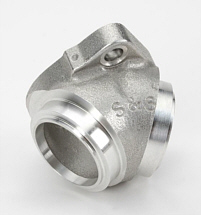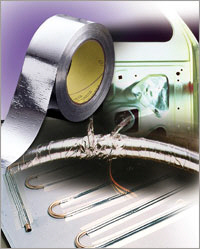By Jason Van Wyhe

Want to know the quickest way to burn up your carburated Harley engine? Easy, let an intake leak go unchecked.
The most common sign of an intake leak is the engine is running poorly. It may exhibit signs of both running rich and lean at the same time. If you suddenly have to run a very rich mixture after running fine for an extended period, you may also have an intake leak.
The check is simple. Get a can of WD40 or a similiar penetrating fluid, with an extended straw. With the bike idling, spray around where the manifold meets the heads, and where it joins the carburator. If the engine change sound when you do this, you have a leak. You may also want to spray some on the vacuum VOES line if your setup has one. This line can be replaced with hose from an autopart store. On CV carbs, check the diaphram on top as they are prone to cracking.
If your leak is around one of the o-ring seals near the heads, you should pull off the carburator and manifold. Get new o-rings, and make sure there is no visible damage to the heads or manifold that prevent it from sealing. Make sure the heads and manifold alighn properly; if not you may not have the right manifold installed.

Now here's the nifty little trick you can add to the installation. Push the manifold and o-rings into place. Before you put the clamp over the top of the o-rings, put some aluminum foil tape over the o-rings. I usually wrap it around twice. You can pick up the tape from hardware and autoparts stores, and is made by companies like 3M. You will want a narrow diameter tape - 1" wide works well. Then install your clamps, and finish installing the manifold and carb.
The tape provides an extra seal from air leaks. It also protects the o-ring from damange from the clamp while installing it, such as pinching and cuts. Finally, it limits cracking of the o-ring due to weathering.
So remember, take care of your manifold leaks, and wrap a little foil around the o-rings just to be sure.
| DISCLAIMER
The statements and opinions expressed in articles, reviews and other materials on this website are those of the authors. They do not reflect the views of Red Dragon Publishing or any of its affiliates.
While every care has been taken in the compilation of this information and every attempt made to present up-to-date and accurate information, we cannot guarantee that inaccuracies will not occur. Red Dragron Publishing will not be held responsible for any claim, loss, damage or inconvenience caused as a result of any information within these pages or any information accessed through this site.
©2009 Red Dragon Publishing. This Article may not be reproduced without the express written consent of Red Dragon Publishing. It may not be re-posted or redistributed on another web site, or any other form of media, or under a different author's name. Feel free to print copies for your personal use, however.
|





